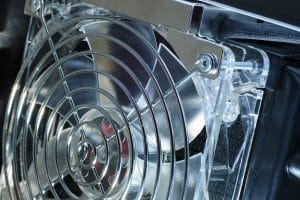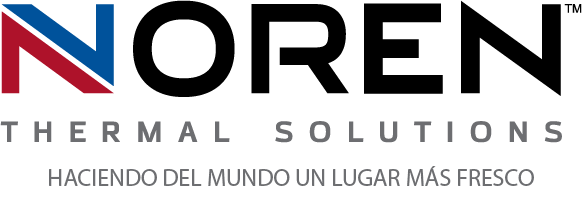 The more powerful modern technology becomes, the more powerful and efficient its electrical thermal management must be. At first, that can seem like a need for more complex, complicated ways to generate chilled air faster than electrical components can generate waste heat. However, when it comes to efficient thermal management, more complex doesn’t always mean more powerful. For many modern applications, some of the simplest forms of heat transfer – such as air-to-air cooling – remain the most reliable and high-performance solutions.
The more powerful modern technology becomes, the more powerful and efficient its electrical thermal management must be. At first, that can seem like a need for more complex, complicated ways to generate chilled air faster than electrical components can generate waste heat. However, when it comes to efficient thermal management, more complex doesn’t always mean more powerful. For many modern applications, some of the simplest forms of heat transfer – such as air-to-air cooling – remain the most reliable and high-performance solutions.
The goals of modern electrical cooling
The ultimate goals of electrical cooling haven’t changed much over the years. As technology uses energy, it generates heat, which can damage sensitive electrical components housed within control panels and other enclosures. Cooling the enclosures prevents this heat from accumulating into pockets and causing severe, sometimes irreparable damage. However, as technology has advanced and companies have learned to streamline their operations, those goals have grown to include optimizing electrical cooling in a way that minimizes the use of energy while optimizing the rate of heat transfer and lowering environmental footprints. In many instances, air-to-air heat exchangers help companies achieve all of those goals with maximum efficiency.
Why air-to-air cooling is more than adequate
Traditional electrical cooling wasn’t as simple as air-to-air cooling. Instead, companies relied on more complex solutions like air conditioners and air compressors that allowed them to use chilled air to prevent electrical overheating. These processes involve machinery such as HVAC equipment and harmful chemicals, such as Freon, and running the systems continuously proved costly in both energy and maintenance needs. Today, however, heat exchangers that utilize air-to-air cooling methods often prove much more efficient. Rather than relying on complex machinery and chemicals, they utilize an eco-friendly cooling fluid that’s able to absorb massive amounts of waste heat and transfer it in a continuous open or closed loop.
Heat exchangers compared to air-chilling methods
As waste heat is emitted from electrical components, a heat exchanger is able to keep it constantly in motion, transferring it a cooler area and dissipating it where it can’t cause any damage. Heat exchangers are designed to handle massive amounts of waste heat continuously, using an eco-friendly cooling fluid that rapidly absorbs and transfers the heat rather than trying to cool it down. For companies that rely on heat exchangers, eliminating the need for cumbersome HVAC and air compression equipment has led to significant improvements in the efficiency, productivity, safety, and cost-management aspects of their electrical cooling systems.
For more information about the value of modern air-to-air heat transfer call Noren Thermal Solutions in Taylor, TX, at 866-936-6736.







